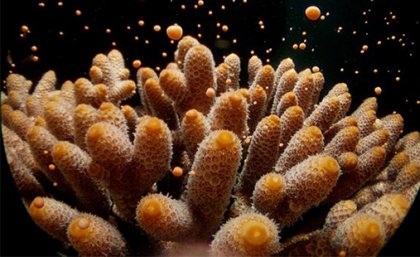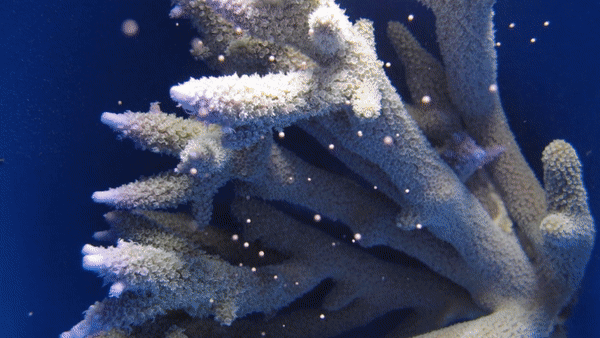
University of Queensland research has pinpointed artificial light as a threat to coral reproduction, in a discovery that will help guide reef and marine ecosystem protection plans.
UQ Global Change Institute researcher Dr Paulina Kaniewska said work at UQ’s Heron Island Research Station revealed that the Great Barrier Reef’s annual coral spawning was dependent on an intricate mix of conditions, with moonlight playing a vital role.
“The introduction of artificial light competes with moonlight and can prevent corals from spawning,” she said.
Dr Kaniewska said the research provided insight into how corals fine-tuned and coordinated the release of eggs and sperm into the water for fertilisation.
“Even though corals don’t have a brain, they have a spread-out nervous system that allows them to transmit signals in response to sensing changes in light conditions on a cellular level,” she said.
The study suggests that the release of sex cells in corals is triggered by a protein similar to the photosensitive melanopsin molecule.
“In mammals, melanopsin plays an important role in synchronising circadian rhythms with the daily light-dark cycle.”
She said the research resolved long-standing questions about how corals synchronised the mass release of sex cells with the phases of the moon or bio-rhythms.
“Effects of light on the timing of spawning are so important because sexual reproduction is vital to reef survival,” she said.
“This research suggests that urban light pollution from excessive artificial light can be a real threat to coral reproduction.”
Dr Kaniewska and colleagues exposed the coral Acropora millepora – one of the dominant coral species that make up the Great Barrier Reef – to different light treatments and sampled the corals before, during and after spawning.

“The annual coral spawning on the Great Barrier Reef is a spectacular synchronised reproduction event where changes in water temperature, tides, sunrise and sunset and the intensity of the moonlight trigger large-scale mass spawning of hundreds of coral species over several nights” Dr Kaniewska said.
“The egg and sperm cells combine and develop into larvae. These settle back on the reef to form new coral colonies,” she said.
“Many different coral species commonly spawn simultaneously to improve their chances of successfully reproducing.”
The research is published in eLife Sciences.
Media: Paulina Kaniewska, p.kaniewska@uq.edu.au, +61 405 386 766; Rachael Hazell, r.hazell@uq.edu.au, +61 (07) 3443 3150 or +61 415 814 529
.jpg)










